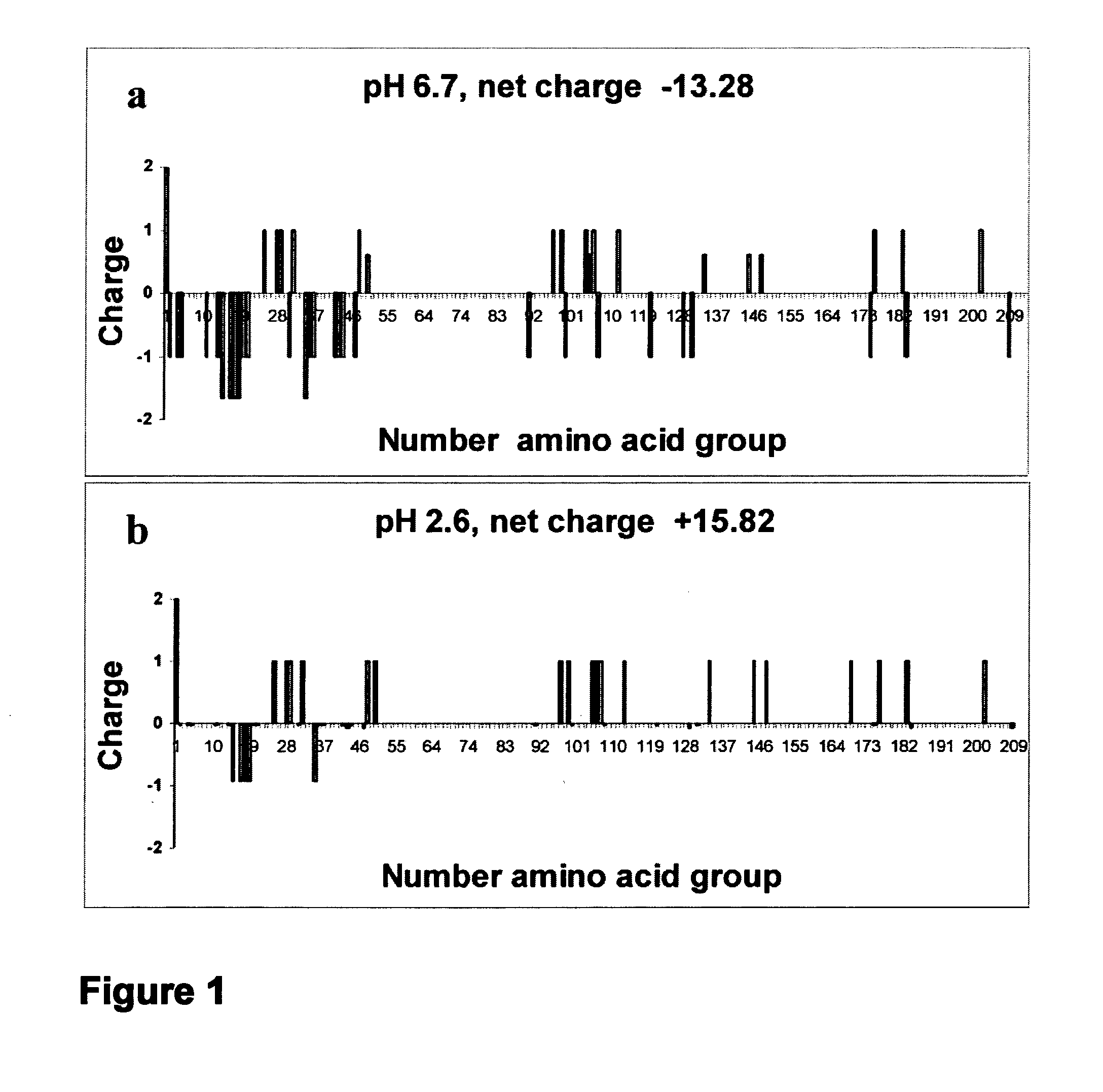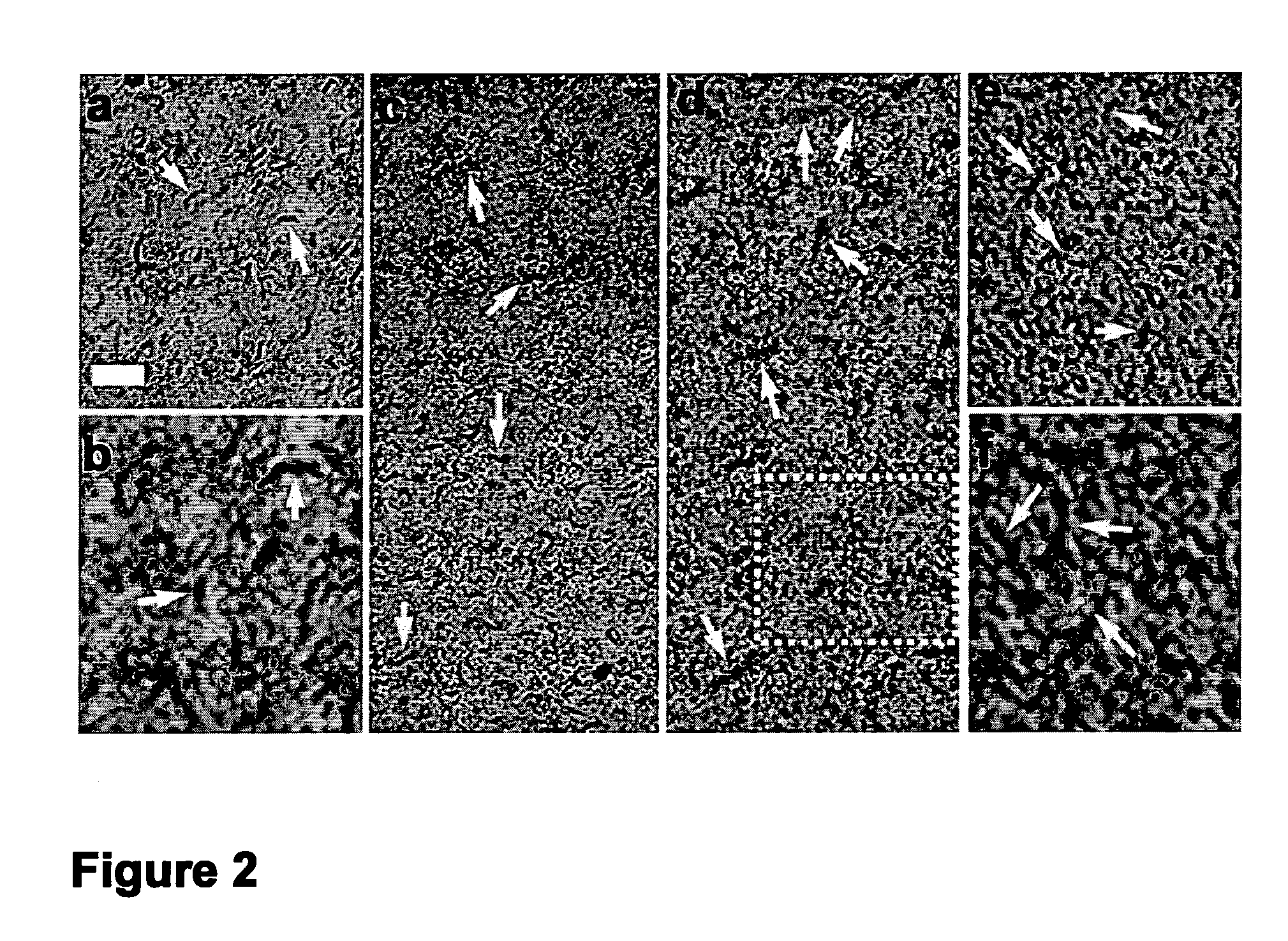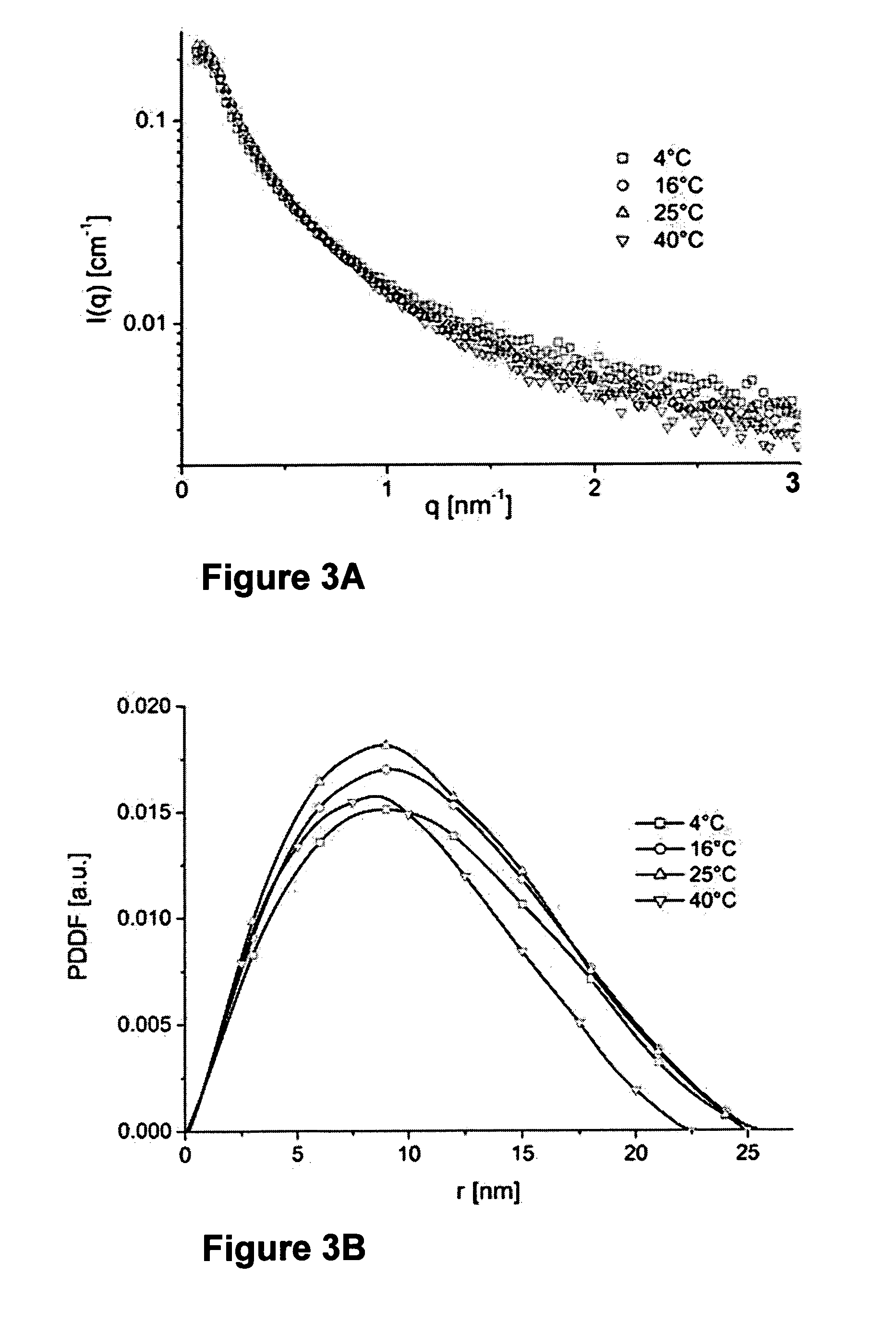Beta-casein assemblies for mucosal delivery of therapeutic bioactive agents
a technology of mucosal delivery and betacasein, which is applied in the direction of drug compositions, phosphorous compound active ingredients, applications, etc., can solve the problems of poor drug absorption in the gastrointestinal tract, poor stability in the gi and especially in the stomach, and many drugs and agents delivered orally
- Summary
- Abstract
- Description
- Claims
- Application Information
AI Technical Summary
Benefits of technology
Problems solved by technology
Method used
Image
Examples
example 1
[0100]Preparation of beta-casein assemblies: Weighted amounts of lyophilized bovine beta-casein are dissolved in low-pH solution (e.g. ˜6% by weight of lactic acid solution or hydrochloride acid solution, ˜pH 2.1), typically at concentrations ranging from 0.1 mg / mL up to at least 50 mg / ml, to the desired pH (2.3-2.8), below the pI. The pH can be adjusted to the desired values using appropriate buffers. Mixing is done at room temperature, and the solution is equilibrated at 4° C. for ˜36 hr, allowing complete solubilization and formation of the protein assemblies. Thereafter, the solutions can be held at any temperature between 1 and 60° C.
[0101]Similarly, to prepare beta-casein micelles at neutral pH, weighted amounts of lyophilized protein were added to a buffer at neutral pH (e.g., HEPES buffer, or PBS), at concentration ranging from 0.1 mg / ml to ˜50 mg / ml.
[0102]Complete solubilization of the protein is achieved within about 1 hr to about 36 hr, at temperatures ranging from 4° C. ...
example 2
[0104]Density measurements of beta-casein solutions: Density measurements of the beta-casein solutions at pH 2.6 as a function of temperature are summarized in Table 1. Density measurements were performed using a density meter DMA 5000 from Anton-Paar, reaching an accuracy of six digits.
TABLE 1Density measurements of beta-casein solutions, asa function of temperature, measured at pH 2.6.Data of 20 mg / ml β-caseinpH 2.6, lactic acid solutionT [° C.]4162540Solvent density1.0052741.0039481.0018780.996814[g / cm3]Solution density1.0104101.0089261.0067641.001588[g / cm3]
example 3
[0105]beta-casein charge distribution: The distribution of charges along the beta-casein backbone and the beta-casein protein total charge at acidic and neutral pHs were calculated. FIG. 1 shows the protein sequence and distribution of charges at the two pH regimes. At pH 6.7, most charges are concentrated at the N-terminus, while the long C-terminus is highly hydrophobic. A net charge of −13.28 was calculated at this pH, in good agreement with previous calculations at similar pH values. At a low pH of 2.6, the protein net charge is somewhat larger (+15.82 vs −13.28). The charge distribution, however, changes significantly. A cluster of negative charges is present in sequences 15-20. Sequences 25-50 contain a cluster of six positive charges and sequences 97-113 contain another cluster of six charges, while the domain in between does not have any charge. Additionally, a large number of positive charges are distributed along the hydrophobic C-terminus. Thus, overall, this picture indi...
PUM
| Property | Measurement | Unit |
|---|---|---|
| Temperature | aaaaa | aaaaa |
| Temperature | aaaaa | aaaaa |
| Fraction | aaaaa | aaaaa |
Abstract
Description
Claims
Application Information
 Login to View More
Login to View More - R&D
- Intellectual Property
- Life Sciences
- Materials
- Tech Scout
- Unparalleled Data Quality
- Higher Quality Content
- 60% Fewer Hallucinations
Browse by: Latest US Patents, China's latest patents, Technical Efficacy Thesaurus, Application Domain, Technology Topic, Popular Technical Reports.
© 2025 PatSnap. All rights reserved.Legal|Privacy policy|Modern Slavery Act Transparency Statement|Sitemap|About US| Contact US: help@patsnap.com



